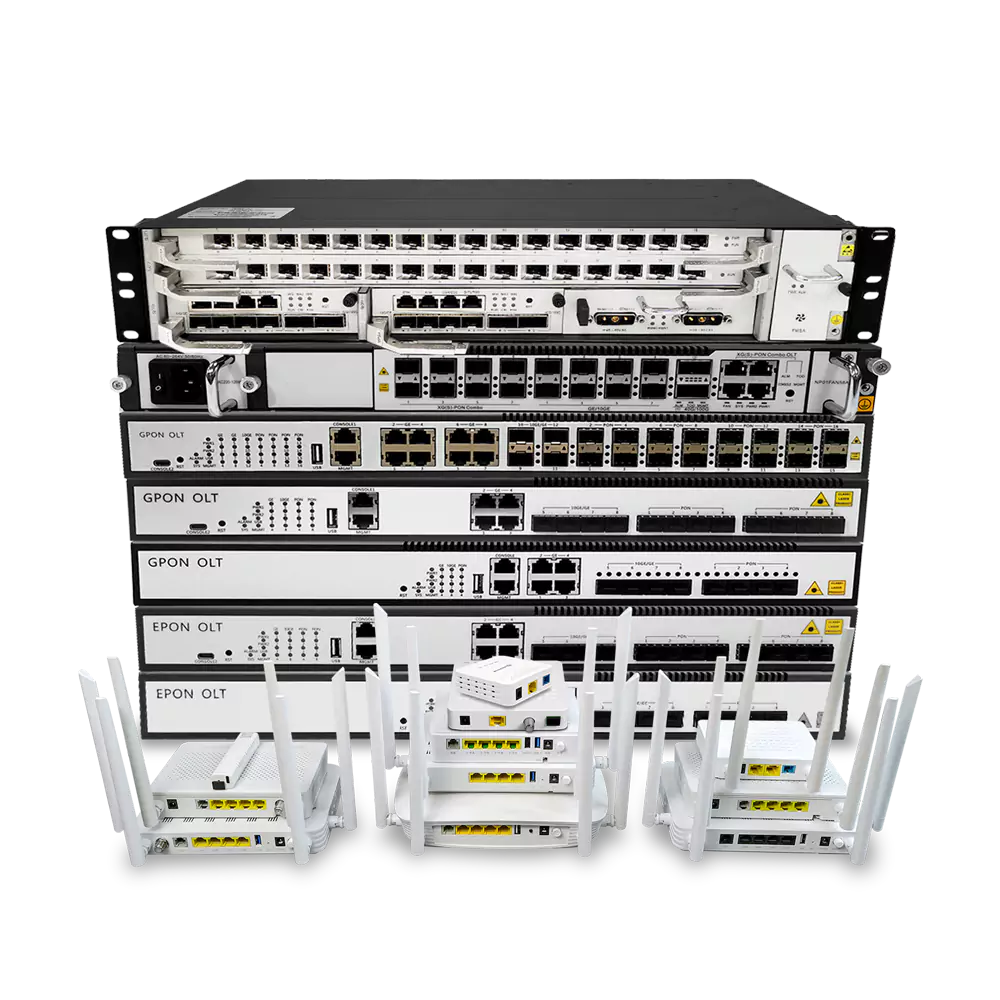In optical modules, terms like Class B+, Class C+, PX10, PX20, and PX20+ refer to specific performance classifications and application scenarios, mainly indicating transmission distance, output power, and receiver sensitivity. Here’s an overview of these classifications and their main differences:
1. Class B+ and Class C+
- Class B+ and Class C+ are specifications defined in the ITU-T G.984 standard, used to describe GPON (Gigabit Passive Optical Network) optical modules. They primarily specify the output power and receiver sensitivity of the module.
- Class B+:
- Output Power Range: 1.5 dBm – 5 dBm
- Receiver Sensitivity: -27 dBm
- Dynamic Range: 28 dB
- Transmission Distance: typically up to 20 km
- Class C+:
- Output Power Range: 3 dBm – 7 dBm
- Receiver Sensitivity: -32 dBm
- Dynamic Range: 35 dB
- Transmission Distance: typically up to 20 km but supports a higher split ratio (e.g., 1:64 or greater)
- Differences: Compared to Class B+, Class C+ has higher output power and better receiver sensitivity, making it suitable for environments with higher transmission losses, such as higher split ratios or slightly longer access distances.
2. PX10, PX20, PX20+
- PX10, PX20, and PX20+ are specifications in the IEEE 802.3ah standard, used to describe EPON (Ethernet Passive Optical Network) optical modules.
- PX10:
- Transmission Distance: up to 10 km
- Typical Application: suitable for short-distance transmission, such as urban or suburban access networks
- PX20:
- Transmission Distance: up to 20 km
- Typical Application: suitable for longer access distances, such as rural or more distant coverage
- PX20+:
- Similar to PX20 but with higher output power or better receiver sensitivity, suitable for environments with higher transmission loss, such as higher split ratios or greater distances.
Summary
- Class B+ vs. Class C+: Primarily used in GPON networks, where Class C+ offers higher output power and receiver sensitivity, supporting a higher split ratio.
- PX10 vs. PX20 vs. PX20+: Primarily used in EPON networks, with PX20 and PX20+ supporting longer transmission distances. PX20+ is suitable for higher-loss environments.
When selecting an optical module, consider the network requirements, transmission distance, and split ratio to ensure optimal network performance and stability.

